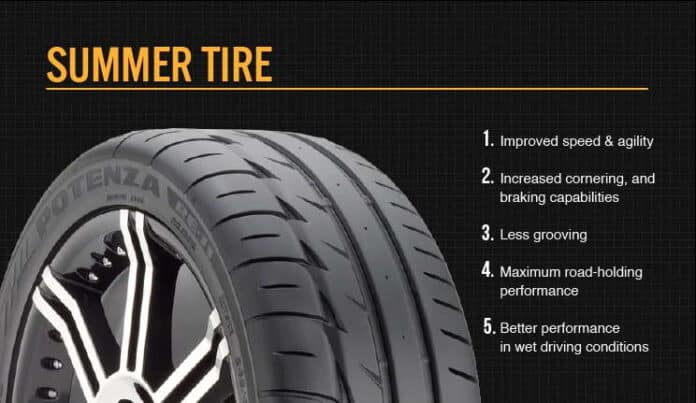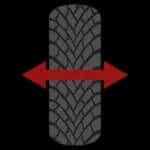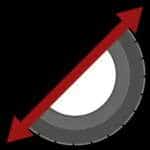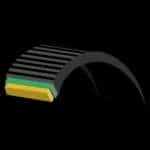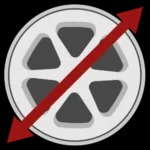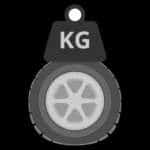Summer tire test and driving: how to choose the right ones
In spring and summer, the sun’s rays attract many outdoors. With the right summer tires, you can travel by car in complete peace of mind even in the hottest temperatures!
Which summer tires are the best?
In this article, you will find an overview of the best summer tires. Which tires should you buy? What should you pay attention to when buying? Let’s see it in detail in our guide.
Tires should be changed twice a year
The last piles of snow have finally melted, and temperatures are rising, so it’s time to change the tires. The winter tire compound is too soft for warm temperatures and quickly reaches its limits as soon as spring arrives. If you don’t have all-season tires, tires are the last thing you should save on, and you should therefore fit summer tires optimized for driving on dry and wet surfaces in warmer climates. Their special profile and harder rubber compound offer a better grip on the road. This increases safety and reduces fuel consumption. These benefits apply to both car and motorcycle tires.
The best summer tires are made with a rubber compound specially designed for hot temperatures, so they do not offer sufficient driving safety in winter. Since the rubber of summer tires hardens in too low temperatures and their grip on smooth asphalt decreases, they must be replaced with winter tires in the autumn. But when is the right time to do it? When to fit winter tires?
The legislation introducing the obligation to mount winter tires on cars and heavy vehicles is governed by Article 6 of the Highway Code. However, it is up to the bodies that manage the individual stretches of road to decide (through specific ordinances) whether or not to impose the obligation, signaled through the Mandatory Snow Chains Signal (the obligation to circulate with snow chains or snow tires) starts from the point where you find the sign.
When is the tire change scheduled?
In general, from November 15th to April 15th, there is the obligation to be equipped with winter tires. The Ministry of Transport has clarified that by way of derogation, it is possible to change tires from one month before the entry into force of the obligation (therefore from October 15th) and up to one month after the conclusion of the obligation (therefore May 15th).
Consequently, summer tires must be fitted from April 16th to November 14th (or, by way of derogation, from May 16th to October 14th).
A look at the tread: what does the law say?
The change of season is not the only reason to change tires. Drivers should also keep an eye on tire wear. It is important to pay attention to the depth of the tread. A new summer tire usually has a tread depth of eight millimeters. Retreaded tires, on the other hand, generally have a shallower depth.
Some law requires a minimum tread depth of 1.6mm. However, for the winter tires, it is recommended a minimum tread depth of 4 mm, while for the summer tires, 3 mm. It is often advisable to change the tires before reaching this limit in order to avoid aquaplaning, ie the loss of grip due to the “float” of the tires on wet roads. Wet grip already drops below 3-4 mm tread depth, which increases the risk of accidents.
Robust, comfortable, fast and economical: the advantages of the best summer tires
Many leave winter tires fitted to their rims all year round, partly for convenience, partly for forgetfulness. But why is it advisable to buy summer tires? Summer tires have the following advantages over winter tires:
- Robustness: thanks to their harder rubber compound, the wear of summer tires at lower temperatures is less than winter tires. For example, with the same wear and mileage of around 10,000 kilometers, summer tires can last up to 2,000 kilometers longer.
- Driving stability: summer tires offer more driving comfort than winter tires. In particular, at high temperatures or at high speeds, thanks to their materials and their tread structure, they offer easier handling and greater driving precision.
- Shorter braking distance: Thanks to their improved wet performance, summer tires have a shorter braking distance in almost all driving conditions. Summer tires at 20 degrees Celsius and a speed of 100km/h on dry roads need around 18 meters less (38 meters instead of 56 meters) than winter tires before coming to a complete stop.
- Reduced fuel consumption: Harder summer tires have lower rolling resistance and, therefore hardly wear out in summer. For this reason, less fuel is consumed, and money is saved. So summer tires safeguard not only your wallet, but also the environment, so it is advisable to fit them as soon as spring arrives.
The most important purchase criteria
Ideally, a summer tire has good fuel consumption and provides excellent traction even on wet roads. But what other criteria play a fundamental role in choosing the right summer tires?
The most important features at a glance thanks to the new EU tire label
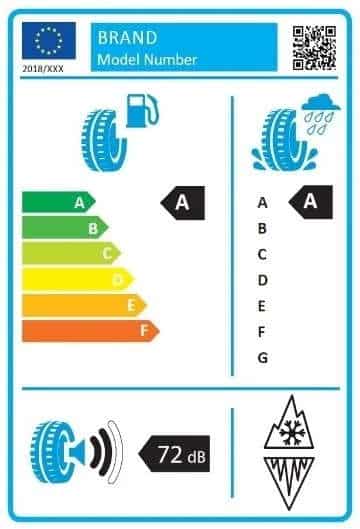
An EU regulation on tire labeling (1222/2009) has been in force since November 1st 2012. The new EU tire sticker has been in effect since May 2021. It provides information on fuel consumption, wet braking, tire rolling noise and grip on snow and ice. The mandatory information is intended to allow buyers to see the most important features at a glance.
1. Fuel consumption
Bargain hunters, in particular, should take a look at fuel consumption, also known as rolling resistance or efficiency class. The easier the wheels roll, the less energy is needed, and the less fuel (petrol or diesel) is used. Rolling resistance is divided into classes A to E and is indicated next to a symbol in the shape of a petrol pump. The fuel efficiency class indicates how much the tires save in terms of fuel consumption. Today, most tires fall into classes B and C.
2. Wet grip
The wet grip of the tires refers to the properties and therefore, also to the safety in case of full braking on wet roads. This information is divided into classes A to G. Summer tires with good wet grip have a short braking distance on a wet road. There are differences of up to 30 percent between the best (A) and worst (F) class. This means that when braking sharply on wet surfaces at a speed of 100 kilometers per hour, the braking distance can increase up to 30 meters. Braking capacity in rainy or wet road conditions is indicated next to a rain cloud symbol.
3. External rolling noise
As we all love to open the windows, especially in summer, external rolling noise is also very important. Indicates how loud the tires are as they roll. The value, expressed in decibel dB (A), refers to the volume measured outside the car, which increases the noise pollution of the road when it is busy.
External rolling noise, also called rolling or hissing noise, is graphically represented with three small sound waves (or bars) next to the speaker symbol:
- 3 waves: louder tire (exceeds the mandatory European limit value).
- 2 waves: intermediate tire (respects the mandatory European limit value or is 3dB less).
- 1 wave: low noise tire (it is below the mandatory European limit value for more than 3dB).
Depending on the tire of the car, there are different noise limits, which is why the combination of the sound wave and decibel values is different. The average is around 70 decibels, which is roughly comparable to the noise level of a running water kettle.
4. When tires age: the DOT number
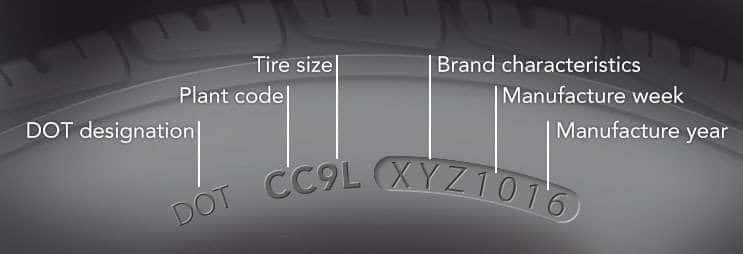
The age of the tires also plays a role in the purchase decision, as the rubber hardens over time and becomes brittle, and therefore the tires lose quality. For this reason, the production date has been indicated since 2000 in the form of a four-digit number in an oval on the side of the tire, the so-called DOT number. The acronym DOT stands for Department of Transportation of the United States because they are the ones who introduced this number. The first two digits indicate the week of production, the last two digits the year of production. For example, a tire with the DOT number 2316 was produced in the 23rd week of 2016, which is the beginning of June 2016.
5. Safe on the road: the ECE test mark
If your tires have the ECE (“Economic Commission for Europe”) test mark, you can be sure that they have been manufactured in accordance with the European standard ECE-R 20 for tires for cars. The brand is indicated in the form of an “E” inside a circle or an “e” inside a rectangle on the side of the tire. The number inside the circle or rectangle indicates the approval country, while the numbers from the third digit onwards outside the circle or rectangle indicate the approval number.
How to find the right tire size?
When you have found a tire that meets all your requirements, you need to make sure that it also fits your vehicle in terms of size and design. If you mount the wrong tires, you risk a fine, the seizure of the car and that the insurance does not fully cover the damage in the event of an accident. To find out which tires to fit, you need to read which ones are approved for your car on the registration certificate (the booklet) or see the initials indicated on the side of your old tires. The dimensions of summer and winter tires may differ.
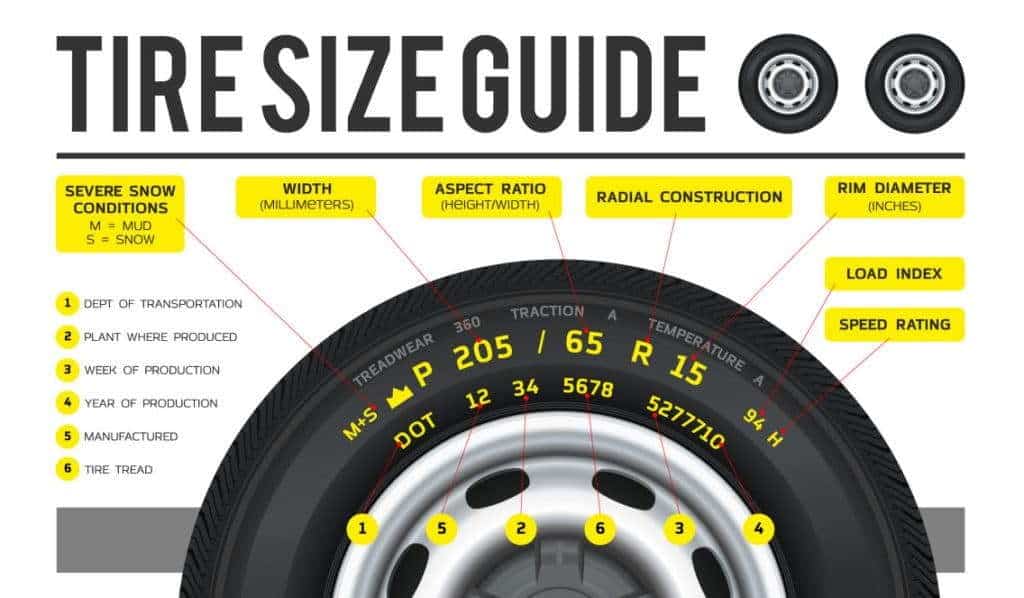
The dimensions of the tires are given in the so-called tire code, which includes numbers and letters. The combination could be, for example, “175/65 R 14 91 T“, which means the following:
- 175: the first digits before the bar represent the tire width in millimeters. In this case, the tires would be 175mm wide.
- 65: the number after the bar refers to the ratio between the height and width of the tire as a percentage. Here the height is 65 percent of the nominal size.
- A: The following letter identifies the type of tire. “R” stands for radial tire, which is now the standard.
- 14: the next number indicates the diameter of the circle in inches. Here you need a circle with a diameter of 14 inches.
- 91: The number 91 expresses the load capacity index (here 615 kilograms).
- T: The letter V gives information on the maximum permissible speed, which in this case is 190 kilometers per hour.
But what exactly can we know from a tire label?
Tire width
The tire width is expressed in millimeters and is between 125 and 335mm for ordinary cars, in 10mm increments. The higher the number, the better the grip and the shorter the braking distance. At a speed of 100km/h, a 225mm wide tire stops 5 meters before a 185mm wide one. With larger models, however, the risk of aquaplaning increases because more water has to be moved. Also, the rolling noise of the wider tires is louder because there is more rubber on the road.
Cross section ratio
The cross section of the tire, expressed as a percentage, expresses the height-to-width ratio of the tires. The lower the percentage, the lower the sidewall of the tire. Wide tires generally have a low cross section, which makes them relatively flat. Since the air cushion under the rim also has less volume, bumps and holes are more noticeable. If the value is 50, the eraser height is half the eraser width.
Type of tire
In terms of design, there are three different types of tires: radial, diagonal and run-flat tires. Currently, there are only radial (R) and run-flat (RF) tires on the market. In the first, the radially arranged threads form the substructure of the tire on which the rubber profile rests. In wet conditions and curves, they have better properties than diagonal tires. They also have lower rolling resistance and cause lower fuel consumption. Diagonal tires (D) can only be found on classic cars, as this type of construction was common until the 1960s. Mixed tires are not allowed; the tread pattern must be identical for all wheels on the same axle, preferably all four tires.
Circle diameter
The diameter of the circle is measured diagonally across the circle and is specified in inches. Common tire sizes for cars are 10 to 20 inches or 315 to 440 millimeters. Large rim tires generally have a lower section ratio, making them more difficult and less comfortable to drive. Smaller rims with a large section ratio cushion better but offer less traction due to their rather small contact area.
Load index
The load capacity index, also known as the load index or Load-Index (LI), indicates the maximum load capacity of the tires at a pressure of 2.5 bar, which is the maximum permissible weight with which the tires can be uploaded. Each number is assigned a value in kilograms. For example, a load capacity index of 80 indicates a maximum load capacity of 450 kg. If the load capacity is exceeded, the tire could be damaged, increasing the risk of an accident. Additional information such as “Reinforced,” “Extra load,” or “XL” characterize tires with a particularly high load capacity index, for example, for vans, vans, SUVs or off-road vehicles. You can choose a load index equal to or higher than that indicated by the registration certificate, but never lower,
Speed index (or speed code)
The maximum permitted speed for the vehicle is indicated by a code letter and goes from F, which stands for 80 kilometers per hour, to Y, which stands for 300 kilometers per hour. The symbols VR (over 201 kilometers per hour) and ZR (over 240 kilometers per hour) indicate the maximum speeds of older vehicles, which are generally no longer produced today. Also, for the speed code, as for the load index, it is possible to fit tires with a speed index equal to or greater than that indicated by the registration certificate, but never lower, with one exception: in the case of tires in winter (only in the period from 15 October to 15 May) it is allowed to go down to code Q, which is equivalent to 160 km/h.
Complete summer wheels, summer tires only or run-flat?
When you buy summer tires you can choose whether to buy complete summer wheels, i.e. with tires and rims, only summer tires, which also require the purchase of separate rims, or run-flat tires, with which you can still travel a certain distance afterward. the bursting of a tire and the complete loss of pressure, for example, to go to the nearest garage. There are basically three types of summer tires:
Complete summer wheels
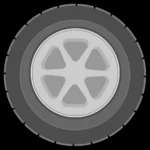
Complete summer wheels consist of tires and rims. Consumers can choose between the more expensive yet elegant aluminum rims and the more robust and at the same time cheaper steel rims. Since all you have to do is unscrew and re-tighten the wheels, the seasonal tire change is very simple. It is not necessary to detach the wheels from the rims, which saves not only time but also money because it is not necessary to go to the workshop, but you can change the wheels yourself with the help of a jack and a wrench or a screwdriver. The disadvantage is that the initial expense is higher, but in the long run, it will save money.
Summer tires only
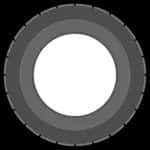
Summer tires only require the additional purchase of rims as they are not included. The tire change can only be done at a workshop or a tire dealer and is consequently more expensive (around 40 euros). The savings in purchasing are offset by regular spending. It would be practical to buy a second set of rims right away.
Run Flat tires
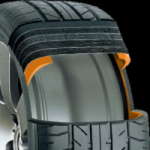
Run Flat tires (RFT for short) have emergency running properties due to their self-supporting reinforced sidewalls which, in case of a flat tire, allow the vehicle to continue walking at a speed of up to 80 kilometers per hour for approximately 80 kilometers, at best to go to the nearest tire dealer. Consequently, it is not necessary to change a broken tire immediately. However, they are much more expensive than regular summer tires.
Winter tires vs. Summer tires
A tire is made up of several layers, each of which guarantees the best possible stability and resistance. The composition varies according to the type of tire, but all tires are made up of these five elements:
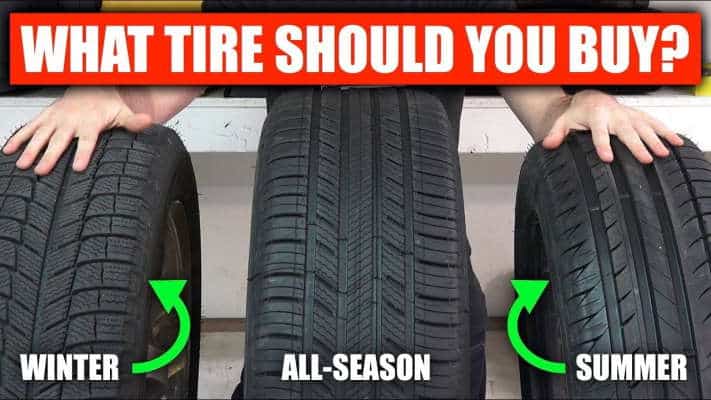
- Tread: this is the part of the tire that comes into direct contact with the road surface. It consists of a tread pattern, which has a profile and an underlying stabilizing layer, and is largely responsible for the driving properties of the tire.
- Carcass: the carcass forms the supporting structure that holds the tire together. It usually consists of one or two layers of fabric, which are embedded in the rubber and act as reinforcements. The fabric is made of synthetic fiber, synthetic silk and steel thread.
- Sidewall or Shoulder: the tire side part that protects the carcass from the outside is called the tire shoulder. Since it is relatively thin, it can absorb bumps and holes well, increasing driving comfort.
- Heel: The bead of the tire, also called the heel recess, connects the tire to the rim and remains firmly pressed against the edge of the circle. Inside the bulge, there are usually several cores of steel wire that stabilize it. It is coated with a layer of rubber.
- Inner lining: the inside of the tire is covered with a sealing layer. Thanks to the special butyl rubber coating, the inner layer prevents air from escaping to the outside.
Depending on the nature of the road, the temperature and the humidity, the tire requirements change. To meet these needs as broadly as possible, the industry today offers various types of tires. Car tires are therefore designed to withstand the weather and road conditions of the respective season. While summer tires are designed for use on dry or wet roads, winter tires have to cope with the weather in the cold season and are suitable for mud, ice and snow. The so-called all-season (4-season) or all-season tires, which can be used all year round, are a compromise. This means that the biannual tire change is no longer necessary, but the handling on dry, wet and snowy roads is worse than that offered by winter and summer tires.
The difference between summer tires and winter tires
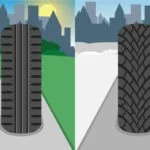
They mainly differ in terms of profile and material composition. Winter tires not only have a greater depth of the profile but also sipes, which in their large number ensure better traction. The tread compound is made from a soft rubber that remains flexible in cold temperatures to ensure a stable grip on the road.
To withstand high temperatures and at the same time offer safety in the rain, summer tires differ from the winter variant in that they have a harder rubber compound. The rubber must be resistant to abrasion, have a firm grip and have a short braking distance. Summer tires don’t get soft even in hot weather and therefore have a good grip even at higher speeds on hot summer days.
The treads are also designed differently. They are characterized by lower rolling resistance and are much smoother. Since the grooves are smaller and the profile has no slats, it is more stable. Due to the flat profile, the contact area of the summer tires with the ground is greater and therefore their grip is also greater. The wide longitudinal and transverse grooves resemble a drainage system: they drain water from the tire contact zone, reducing the braking distance in wet conditions and reducing the risk of aquaplaning.
Tire pressure, storage and mounting
There are also some points to consider after purchasing summer tires. For example, how much should the pressure be? And what about the spare tire? And at best, how should tires be stored so that they last as long as possible?
Keep the pressure constant – regular checks are essential
To ensure comfortable and safe driving, the tire pressure must be checked regularly. If the inflation pressure of summer tires is too low, they are often damaged, driving stability reduced and braking distances increased. On the other hand, if the tire pressure is too high, the driving comfort suffers due to the low damping of bumps and ditches. Also, cornering is much worse. With the right pressure, you can even save money: with low pressure, fuel consumption increases and tire life decreases.
You can find out the correct tire pressure in your car by reading the label stuck on the fuel cap or on the driver’s door frame. Depending on the load, different pressure is required for the front and rear wheels. Ideally, the values should not be exceeded by more than 0.3 bar. In that case, the car will absorb less bumps, but the steering ability will be better and the braking distance is shorter. The check should always be done on a cold tire, as the air pressure also increases when heated. Suitable metering devices can be found at most petrol stations.
The fifth wheel of the car: don’t forget the spare wheel
Having a spare wheel with you is not mandatory. However, as it can happen at any time that one of the wheels gets punctured with a nail or a splinter, it is advisable to always carry a spare wheel with you, especially if the summer tires are not run-flat models. This will allow you to continue your journey should you have a puncture and will save you the cost of the tow truck. The downside is that the extra weight of the wheel will increase fuel consumption and you will have less space in the trunk.
There is the spare wheel of normal size, identical to the other wheels and which will avoid you having to go to a tire dealer in case of a puncture, and the spare wheel, which is smaller than the other wheels and less bulky than the classic spare wheel, but it is approved for temporary use only. The spare wheel should also be checked regularly to check its efficiency.
Cool, dry and dark – the tire’s favorite environment
In spring and autumn, the question arises of how to properly store the tires from the previous season. In order for summer tires to last as long as possible, they need to be stored in a certain way. At best, the summer tires without rims should be stored standing on dry ground and cleaned and turned every few months. It is recommended that the storage place be as dark as possible to protect the rubber from UV radiation, which accelerates the aging process. Complete wheels can ideally be stacked on top of each other, possibly with cardboard between the individual tires. It is also advisable to use tire bags, wheel shafts or wall brackets.
Before storing them, it is good to prepare the tires accordingly:
- Clean the tires thoroughly with a suitable cleaner and then rinse them with plenty of water.
- Check your tires for any foreign matter and damage.
- Measure the tread depth to make sure it is above the minimum value.
- It increases the tire pressure by 0.5 bar above the manufacturer’s specifications because tires lose pressure over time even if they are not used.
Durability: how long do summer tires last?
To determine the tread depth, the tires are equipped with an indicator. This so-called wear indicator is located on the edge of the tire under the letters TWI (“Tread Wear Indicator”), sometimes also under the tire manufacturer’s logo. At the level of these marks, there are small raised notches in the tread profile. When the tread has worn down to this height, it means that the minimum depth has been reached and that new tires are needed. The Highway Code does not prescribe an expiry date for car tires, but as the material deteriorates over time, it is recommended to change them after six years at the latest. Even if the tires are new, the sun’s ultraviolet rays, heat and humidity inevitably damage the material, making the rubber compound hard and brittle.
The exact time to change them, however, always depends on driving behavior, maintenance and the number of kilometers traveled. Those who travel a long way need to change tires more often. If you want to protect your tires, you should avoid hard acceleration, hard braking and high-speed cornering. With a smooth and careful driving style, the tires can last up to ten years.
The history of the tire
In 1830 Goodyear discovered the vulcanization of rubber, a process of great importance for the production of tires. 57 years later, John Boyd Dunlop developed the first tire. Eventually, in 1891, the Michelin brothers invented the first removable tire. Goodyear, Dunlop and Michelin are still among the leading tire manufacturers along with Continental, Falken, Hankook, Uniroyal, Nokian, Bridgestone and Pirelli.
